What Is Query Fan-Out?
Query fan-out is how AI search engines like Google AI Mode and ChatGPT split one question into multiple related searches, merge the findings, and generate a single intelligent answer. Understanding it is key to improving your brand’s visibility in AI search.
AI search systems, also known as Large Language Models (LLMs), such as Google AI Mode, ChatGPT, Mistral and Perplexity, use query fan-out to gather richer, more context-aware information and improve the quality of their answers. In simple terms, query fan-out is how LLMs think through a question. Instead of returning one direct result like traditional search engines, they perform multiple searches behind the scenes to understand context, verify facts, and synthesize the best possible answer.
In this article, we’ll break down how query fan-out works, why it matters for brands, how it affects AI search visibility, and the practical steps you can take to optimize your content for it.
Here’s an illustrative example of how query fan-out works:
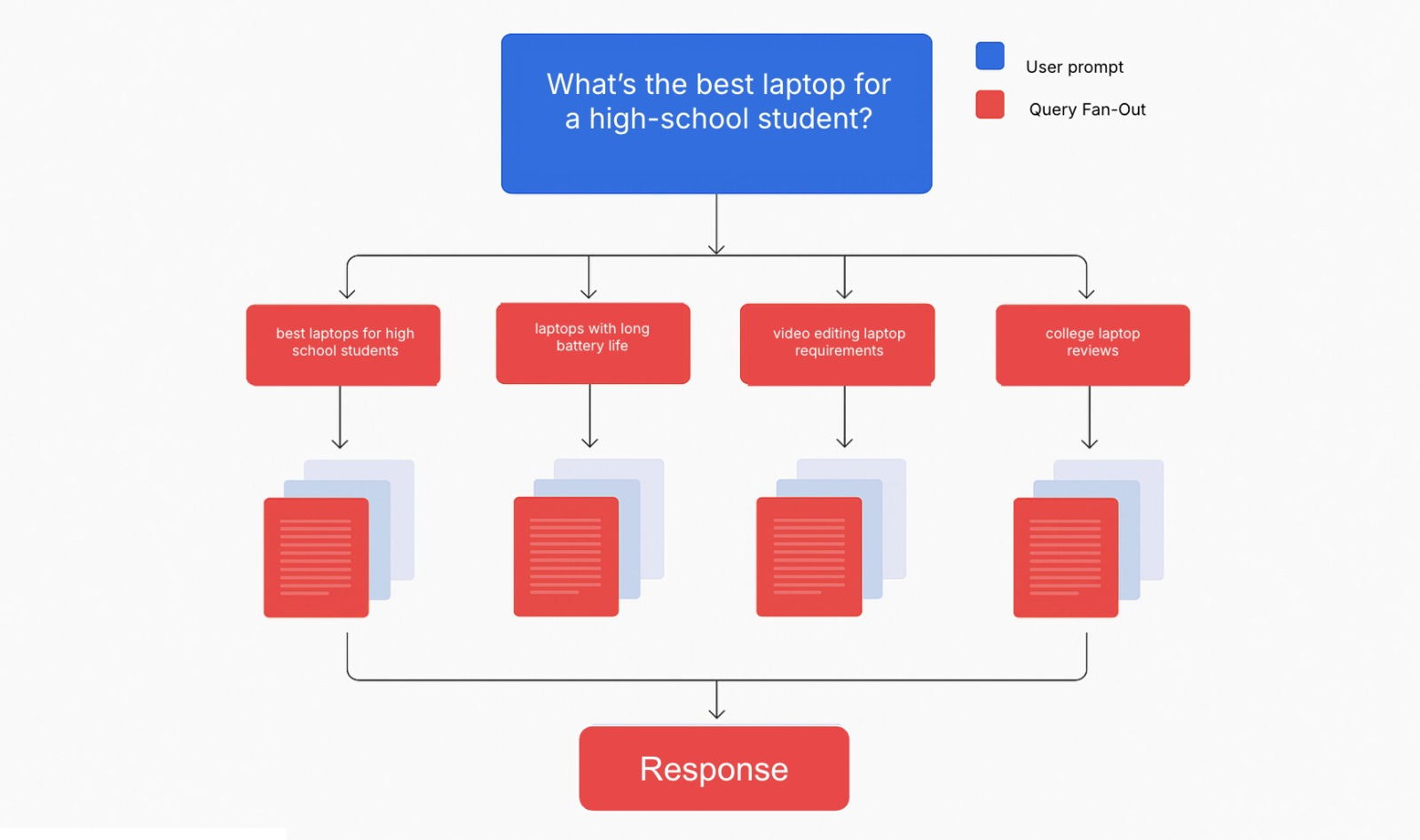
Query fan-out is not just theory, it’s already in action inside modern AI search engines.
Query Fan-Out in Google AI Mode
Google popularized the term “query fan-out” when introducing Google AI Mode, a conversational AI interface available within Google Search.
In the Google I/O 2025 keynote speech, Head of Search Elizabeth Reid said: “AI Mode isn’t just giving you information—it’s bringing a whole new level of intelligence to search. What makes this possible is something we call our query fan-out technique.
“Now, under the hood, Search recognizes when a question needs advanced reasoning. It calls on our custom version of Gemini to break the question into different subtopics, and it issues a multitude of queries simultaneously on your behalf.”
Check the video from the 2025 Keynote:
When you search in Google AI Mode, you might see the model run multiple web searches as part of its reasoning process.
In this example, Google seems to split the user’s query into eleven searches:
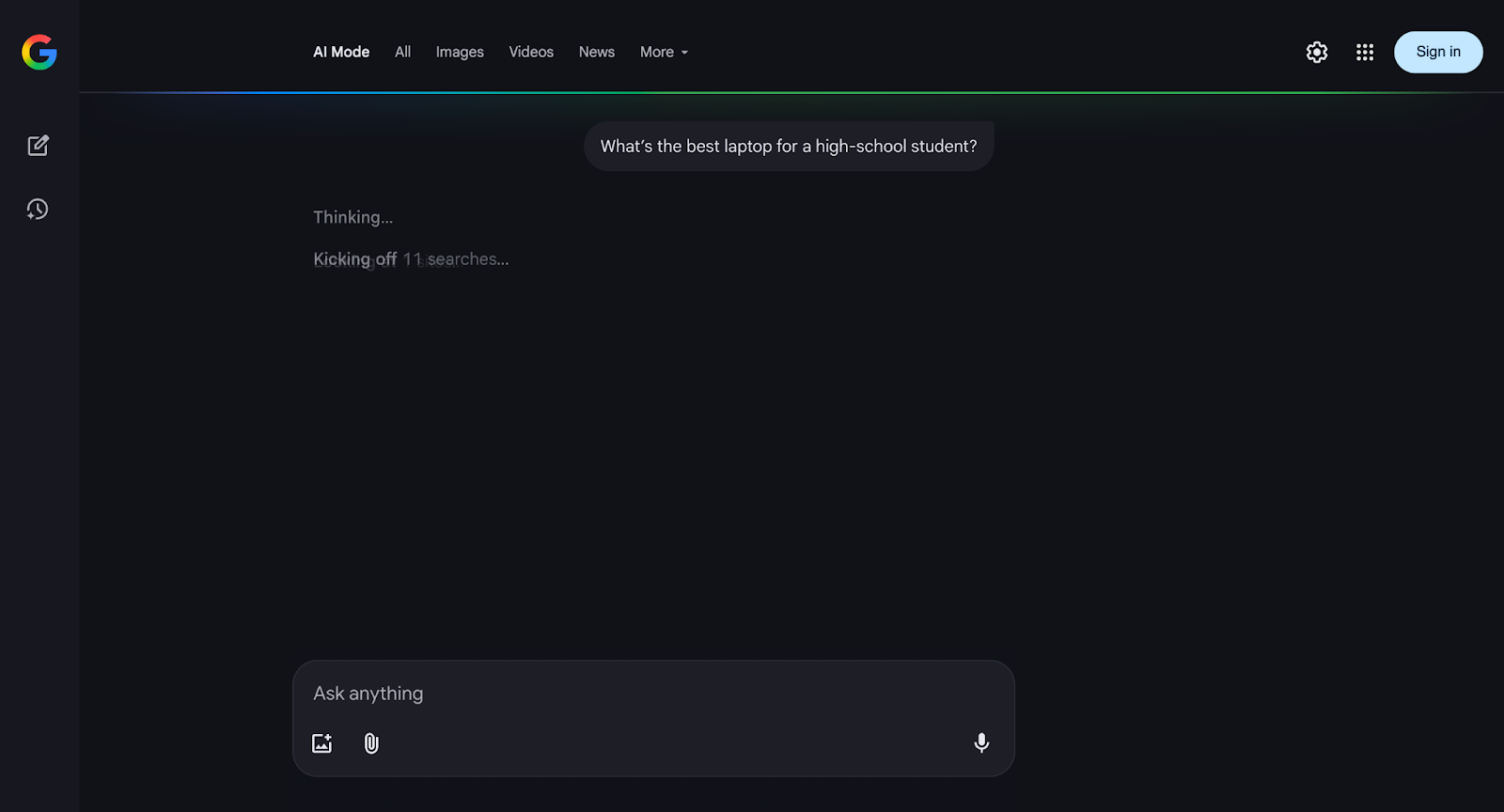
This query fan-out enables Google’s AI to provide a highly specific response:
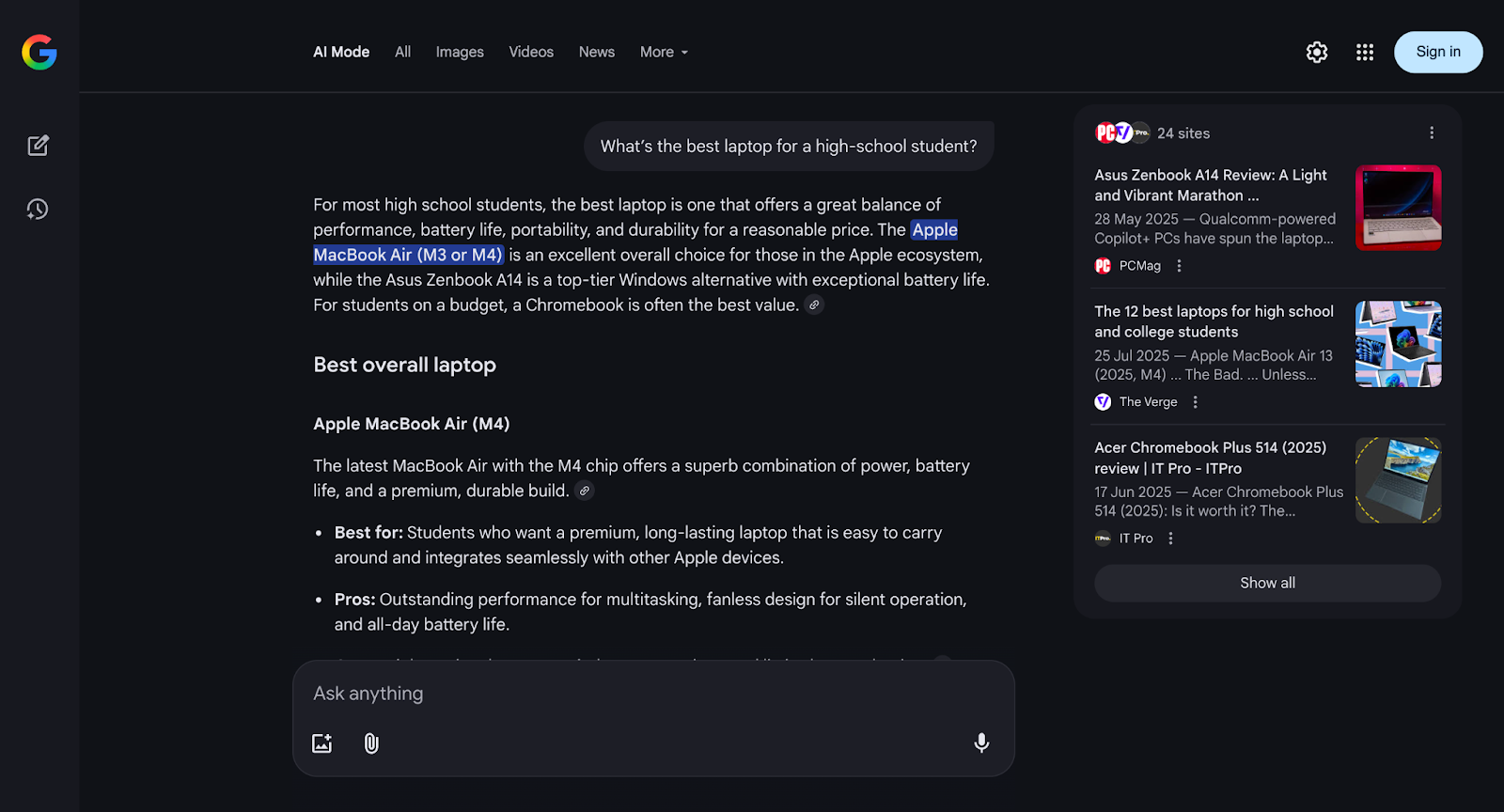
Gemini (formerly Bard) and other LLMs operate this way.
- It takes your first search (“query”) and then finds all of the related queries it knows about the topic (possibly from the same place as People Also Ask in the search results).
- It crawls all the information it has and brings it into the first query.
- It loads all of those sites and brings THAT information into the first query.
- Then it builds an answer that includes the answer to your query plus additional information that you didn’t even know you needed.
How Query Fan-Out Changes Content Strategy and SEO
Historically, the prevailing SEO wisdom was to create one page per keyword or phrase. Over time, we’ve increasingly seen that pages that cover a full topic can rank for multiple different queries. While SEO is not (yet) dead and these types of pages do still get traffic, this practice is showing diminishing returns and may cease to be effective in the next 18-24 months.
So, how do we shift our content strategies in this new query fan-out world where the goal, ultimately, is to be cited as often as possible by LLMs so that your brand is familiar to a prospect and they’re more likely to click an ad or an organic result? This is where Generative Engine Optimization (GEO) principles come into play; aligning topic coverage, semantic structure, and authority so AI systems can reliably identify and cite your content.
There are a few things to take into account.
1. Cover the full topic including sub topics and phrases. This probably means producing a lot more content than you already are.
2. Use structured data where possible. FAQ schema is especially important for questions.
3. One article about a topic isn’t enough. You need a corpus of content around the topic.
4. If you do services, write an article about the top X services in your industry and put yourself at the top. Google and others love this stuff.
It’s important to note that Google’s goal with AI Mode, and likely the goal of all of the other LLMs as they get more user data (but they’ll never have as much as Google), is to serve up content that makes sense for your browsing history and what they think you want to see.
Ultimately, Google’s business works only when they can serve you the best result for your query (to keep you happy so you come back time and time again). So if you’re producing content, you need to provide the best answer so they can take it and use it in AI, hopefully citing you along the way.
Why Do LLMs Use Query Fan-Out?
LLMs use query fan-out to better satisfy search intent (what the user wants).
The system expands queries not only to find direct answers but also to surface related perspectives and contextual data that improve accuracy and depth. Considering different angles and interpretations of the user’s query allows the AI system to provide richer responses that cater to users’ explicit and implicit desires.
In the example below, ChatGPT addresses various types of intent to maximize the response’s helpfulness:
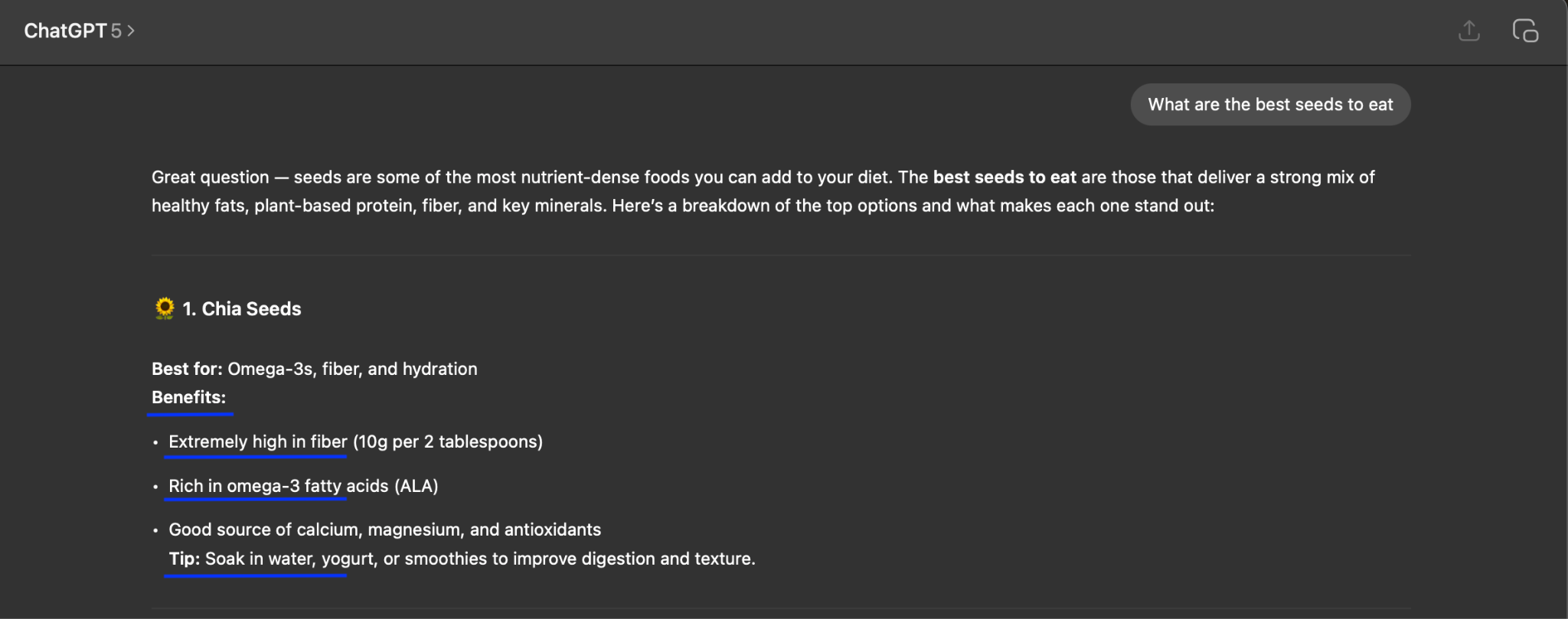
Query fan-out also enables AI systems to answer complex, layered queries that haven't been clearly answered online before. Because the system can combine multiple pieces of information to draw new conclusions.
Here’s a snippet of a ChatGPT response to a highly specific query:
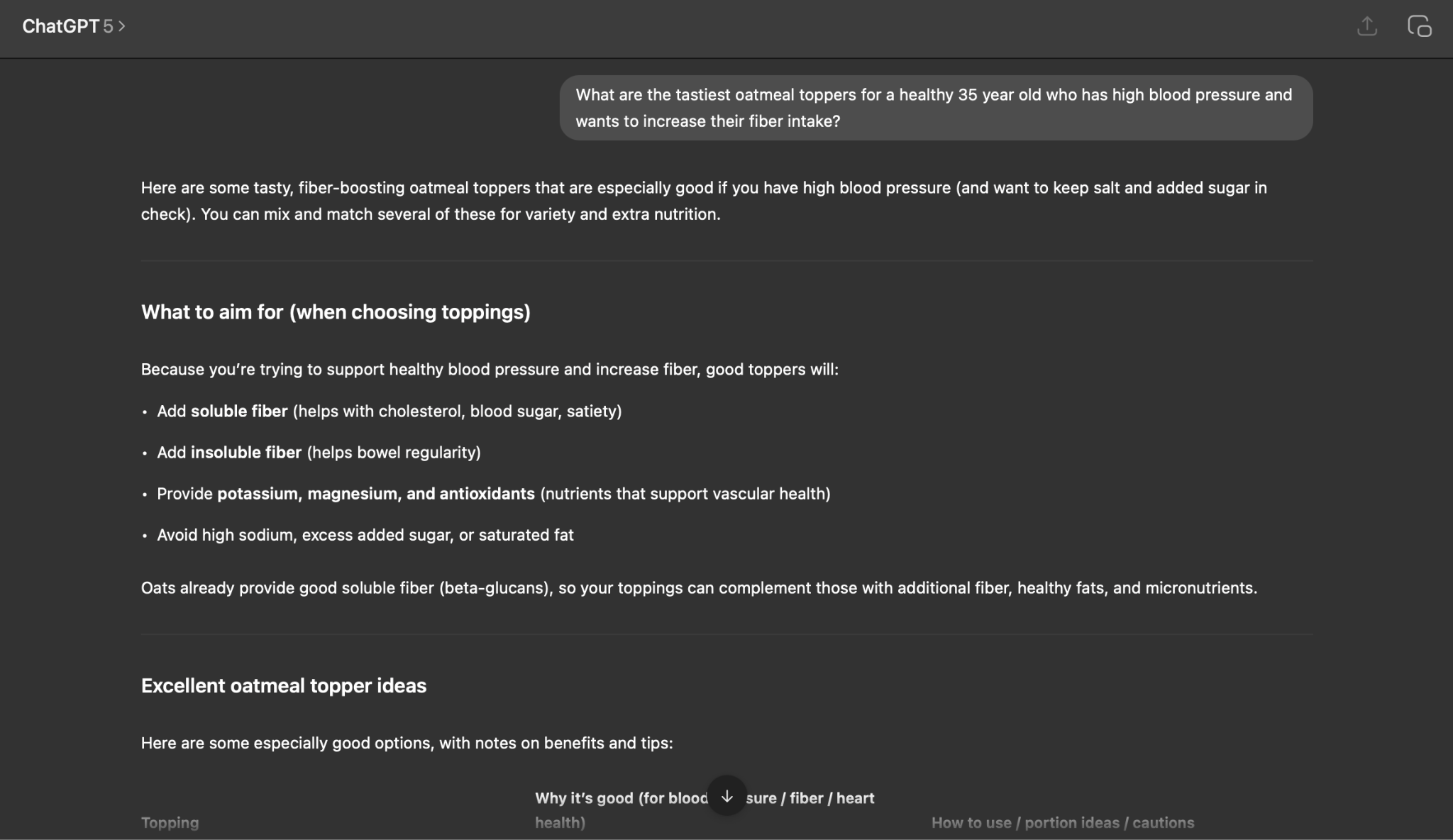
Why Does Query Fan-Out Matter in Marketing?
Query fan-out matters in marketing because it enables AI systems to generate highly specific responses, which may reduce users’ reliance on other information sources.
This means AI responses can have a huge influence on consumer decisions. And ensuring your brand is featured favorably in relevant conversations could be key to reaching and engaging your audience—especially as AI adoption increases.
If you optimize your content for query fan-out, you may be able to increase your AI visibility through:
- AI mentions: mentions of your business within AI responses
- AI citations: linked references to your content alongside AI responses
Here’s an example of an AI mention, an AI citation and direct product purchase link in ChatGPT:
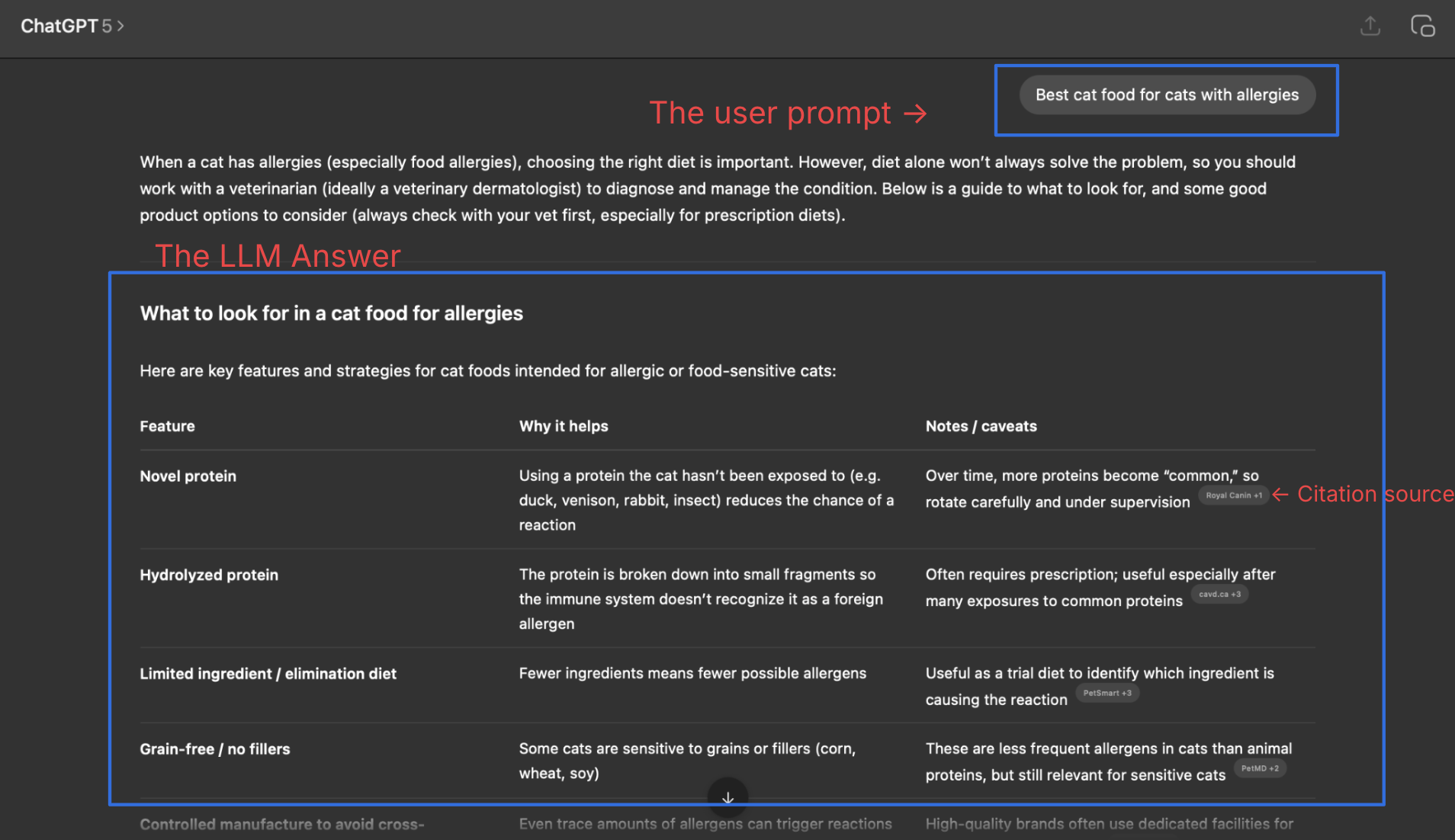
And in this image you can see the Brand being mentioned with a direct product link provided as well.
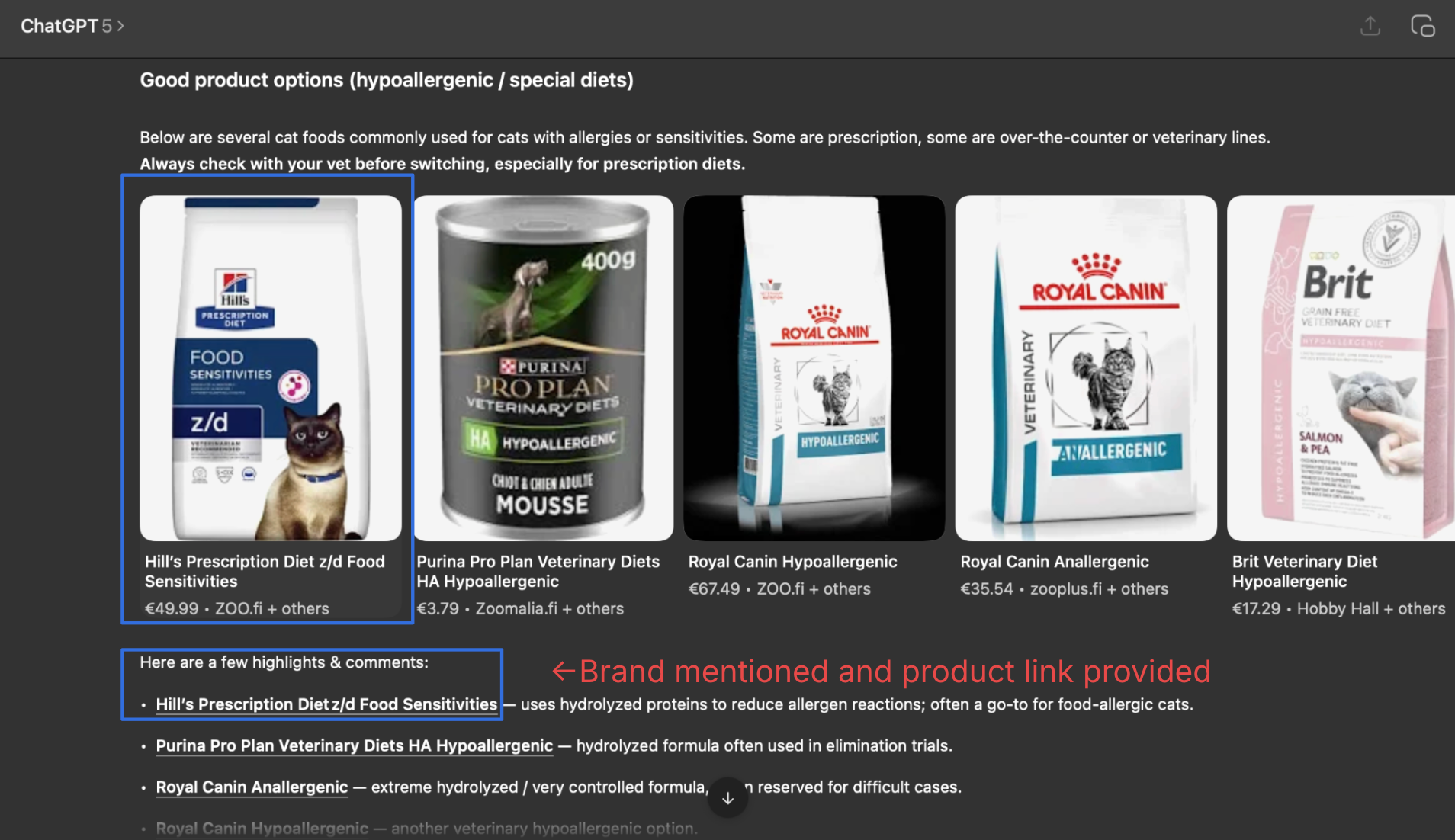
Query fan-out requires a specialist approach because it works differently than traditional search algorithms. That said, optimizing for query fan-out can boost your performance in traditional search, too.
How to Optimize for Query Fan-Out
To optimize for query fan-out, focus on building topic depth, structure, and semantic clarity. Identify your core topics, expand them with subtopics, write for natural language processing (NLP) algorithms, and apply schema markup to help AI systems interpret your content.
This is in addition to following other content optimization for Generative AI best practices.
1. Identify Core Topics
First, identify core topics to build your AI visibility around. This will help you to focus your optimization efforts more effectively.
I recommend that you start with topics directly related to your business and what you offer. This helps you:
- Control how your brand is portrayed in AI-generated responses
- Show up during key stages of the buyer’s journey, where visibility and influence matter most
- Leverage your authority, since these are areas where you're clearly the expert
You can identify the most important brand topics through Superlines’ data. For example, you might find that people are more interested in social responsibility than technology and innovation.
Once you’ve identified brand-related topics, expand into related areas aligned with your brand’s expertise. Making sure to prioritize based on your business goals and audience interests.
For example, at Superlines, we publish content about our AI Search solution and broader digital marketing topics.
2. Plan Topic Clusters
Topic clusters are groups of interlinked webpages that work together to cover a core topic comprehensively. They’re made up of a central pillar page, which provides a broad overview of the core topic, and several cluster pages, which cover relevant subtopics.
Topic clustering helps you to address multiple queries that may be generated through relevant query fan-outs, meaning you may have a greater chance of featuring in AI responses.
It also helps you to build topical authority, which can encourage AI systems to prioritize your answers over others.
3. Create Helpful, Comprehensive Content
Creating helpful, comprehensive content is key to answering the diverse sub-queries that can result from query fan-out.
Break down each subtopic into even more specific questions. Then address these intents through subsections of your page.
4. Write for NLP
AI systems use natural language processing (NLP) to understand written content, so writing for NLP can help you appear in AI responses.
Here are some tips on writing for NLP:
- Write in chunks. Chunks are self-contained, meaningful sections of content that can stand on their own and be easily processed, retrieved, and summarized by an AI system. Write in full sentences and restate context where helpful.
- Provide definitions. When you introduce a new concept, provide a clear and direct definition. This will help AI systems understand what you’re talking about, and they may seek out definitions as part of the query fan-out process.
- Structure content effectively. Add descriptive subheadings to break your content into sections and use heading tags to show their hierarchy. This will help AI systems identify content related to highly specific queries. You can also use tables and lists to create easily parsable information.
- Use clear language. Use clear, conversational language. Avoid jargon, overly complex sentence structures, and unnecessary fluff. This will make it easier for AI systems to understand your content and extract valuable information.
5. Use Schema Markup
Schema markup allows you to add machine-readable labels to different types of data on a page, and these labels could help AI systems interpret your content more accurately.
For example, you can use Product schema to label a product’s name and image. And use Offer schema to label the product’s price and availability.
Start Measuring Your Performance in AI Search
Measure the success of your query fan-out optimization strategy with Superlines.
The toolkit shows your share of voice for a selection of non-branded queries across multiple AI platforms. This shows how often LLMs mention you as opposed to (or alongside) your competitors.
You can even see if your brand is mentioned first, second, or further down in response to specific prompts. The tool provides insight into your brand’s portrayal in AI responses, too.
Working to emphasize your business’s strengths and mitigate its weaknesses allows you to generate more positive coverage in AI responses. And ultimately attract more customers.
Superlines is among the leading GEO analytics platforms helping teams measure and improve AI search visibility. You can learn more or request access to see how your brand performs in AI search. The future of search has already arrived, even if it’s not evenly distributed yet. Track your brand’s visibility in AI search with Superlines today. Discover where your content appears in AI answers and learn how to strengthen your presence before competitors do!
.svg)
.svg)
.svg)
.svg)


